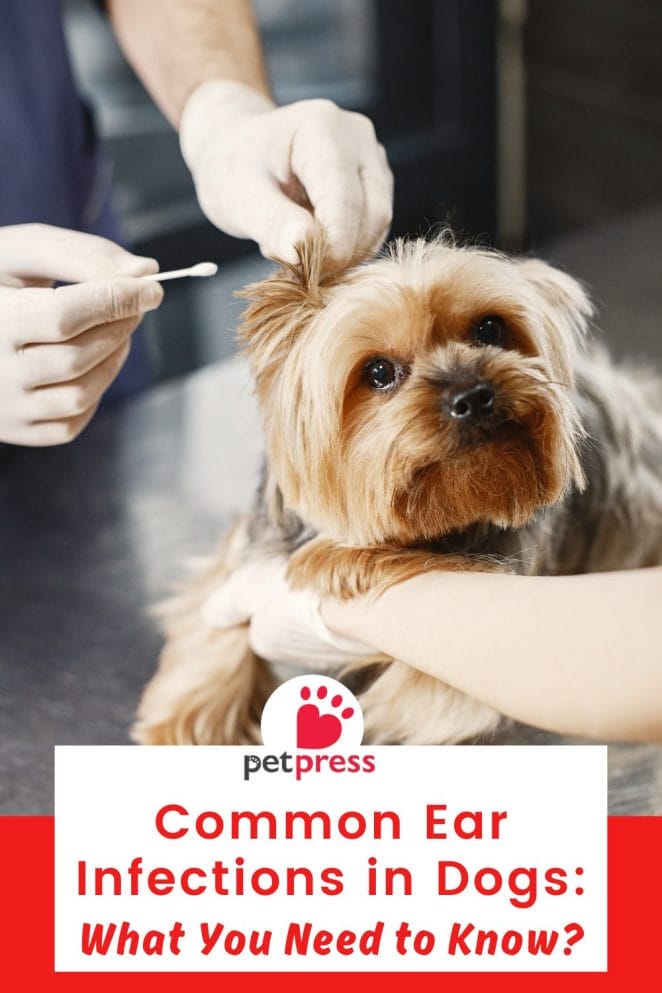
Ear infections do not only affect humans; they’re also a prevalent issue in dogs, affecting canines of any age and breed. These conditions can drastically deteriorate a dog’s quality of life, making early detection and understanding of common ear infections in dogs crucial for all pet owners. It’s not just about soothing discomfort—it’s about averting the severe consequences of unchecked infections.
This article serves as a comprehensive guide for dog owners on the common ear infections in dogs. Whether you’re dealing with an ongoing infection or aiming to prevent future occurrences, you’ve landed in the right spot.
With this information, you’ll be better prepared to maintain your dog’s ear health and ensure their overall well-being, keeping them joyful and comfortable.
Understanding Ear Infections in Dogs
Unlike human ears, a dog’s ear canal is more vertical and has an L-shape, which makes it easier for moisture and debris to get trapped. This design, while great for hearing, unfortunately, also creates a perfect environment for infections.
Types of Ear Infections
- Otitis Externa: This type of infection impacts the outer ear canal, and it’s the most common one seen in dogs. It’s what most pet owners think of when they hear “ear infection.” Symptoms might include redness, swelling, and sometimes a bad smell coming from the ears.
- Otitis Media: This is an infection of the middle ear, which is less common but more serious than otitis externa. Since the infection is deeper inside, it might not be as obvious and can lead to more severe conditions if untreated.
- Otitis Interna: The innermost part of the ear is affected here, and it’s the most serious type of ear infection. It can lead to complications like hearing loss or issues with balance. Immediate vet care is crucial if you suspect your dog has this type of infection.
Causes of Ear Infections
Several factors can contribute to common ear infections in dogs. Understanding these can help in prevention efforts:
- Bacteria and Yeast: These are the most frequent invaders that thrive in warm, moist environments like a dog’s ear canal.
- Ear Mites: Tiny parasites that are especially common in puppies can cause intense itchiness and lead to secondary infections.
- Allergies: Just like humans, dogs can have allergies to foods, pollen, or dust that can inflame their ears and set the stage for an infection.
- Excess Moisture: Whether from bathing or swimming, water that gets trapped in the ear canal can dissolve earwax which protects against infections, creating an environment where bacteria and yeast can flourish.
- Foreign Bodies: Grass seeds, dirt, or other debris can get stuck in a dog’s ear, irritating it and potentially leading to infection.
If you notice any signs of discomfort, redness, or unusual odor in your dog’s ears, it’s a good idea to consult with your veterinarian.
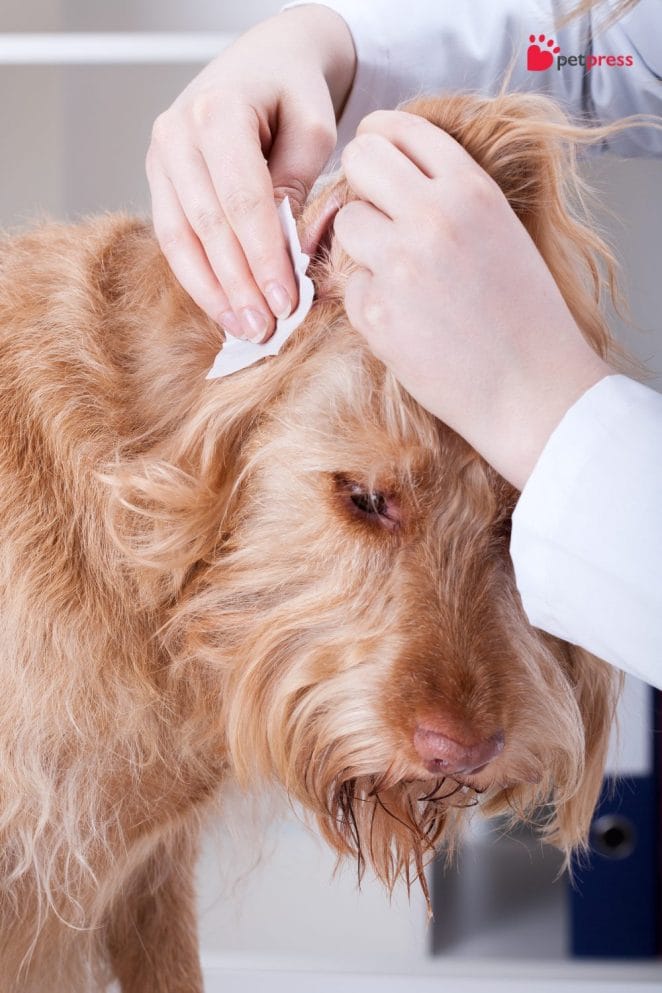
Recognizing the Signs of Ear Infections in Dogs
Dogs can’t tell us when something’s wrong, so it’s up to us, the pet owners, to watch for signs of trouble.
A. Symptoms to Look Out For
Here are several signs that might indicate your dog is suffering from an ear infection:
- Ear Odor: A strong, unpleasant smell coming from your dog’s ears is often the first sign of an infection.
- Excessive Scratching: If your dog is constantly scratching at their ears or rubbing them on furniture or the floor, it could be due to discomfort from an infection.
- Head Shaking: Dogs frequently shake their heads to try to relieve itching or discomfort in their ears.
- Redness and Swelling: The inside of the ear might appear red, swollen, or feel warmer than usual.
- Discharge: You might notice a yellow, brown, or bloody discharge coming from your dog’s ear.
- Loss of Balance or Hearing: In more severe cases, an ear infection can affect your dog’s balance or lead to hearing loss.
- Behavioral Changes: Dogs in pain or discomfort might become more irritable or even depressed; they might not want their ears touched at all.
B. When to Seek Veterinary Help
While some ear infections might seem minor, they can swiftly develop into more serious conditions if not properly treated. Here’s when you should seek professional advice:
- Persistence of Symptoms: If the symptoms don’t improve with basic home care within a day or two, it’s time to call the vet.
- Severe Symptoms: If your dog shows signs of severe pain, significant swelling, or hearing loss, don’t wait. These could indicate a more serious infection or even damage to the ear structure.
- Recurring Infections: Some dogs might suffer from chronic ear infections due to underlying conditions like allergies. If ear infections are a recurring issue for your pet, a vet can help identify and treat the root cause.
- Uncertainty: If you’re unsure about the severity of the infection or how to care for it, professional guidance is always the best route.
Always remember, when in doubt, it’s better to err on the side of caution and consult your vet. This not only ensures the health and comfort of your furry friend but can also prevent the situation from worsening, saving you from more extensive and expensive treatments down the line.
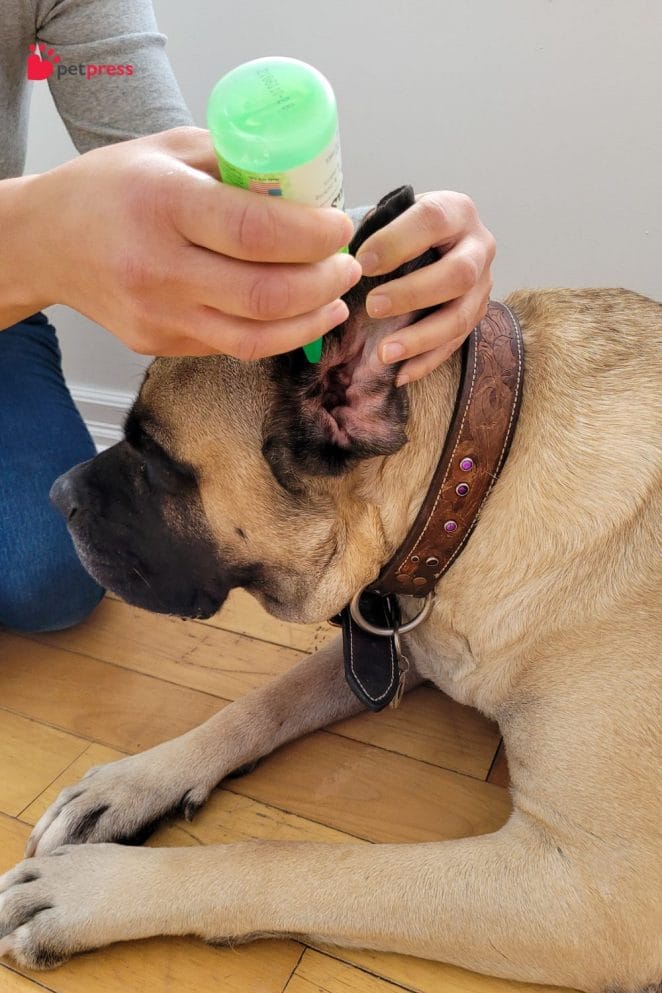
III. Prevention and Care
By focusing on regular cleaning, maintenance, and proper diet, you can significantly reduce the risk of your dog developing these uncomfortable and often painful conditions. Let’s dive into some straightforward strategies to keep your furry friend’s ears healthy.
A. Cleaning and Maintenance
Regular ear cleaning is a cornerstone of preventing common ear infections in dogs. Here are some simple tips to keep your pup’s ears clean and infection-free:
- Routine Checks: Make checking your dog’s ears a part of your regular grooming routine. Look out for signs of redness, unusual odor, or excessive wax buildup.
- Gentle Cleaning: Use a vet-recommended ear cleaner. Squeeze a small amount into your dog’s ear canal, gently massage the base of the ear for 20-30 seconds, and then let your dog shake out the solution. Afterwards, wipe away any loose debris from the ear flap with a cotton ball or soft cloth. Avoid using cotton swabs in the canal itself to prevent damage.
- Dry Ears Are Happy Ears: Dogs who love to swim or bathe frequently should have their ears dried thoroughly afterwards. Moisture is a breeding ground for bacteria and yeast.
- Be Observant: Keep an eye on your dog’s behavior. Excessive scratching or shaking of the head could indicate discomfort and the need for a vet visit.
B. Diet and Allergies
The link between diet, allergies, and ear health in dogs is significant. Many dogs face allergies that can lead to itchy and inflamed skin, including the ears, making them more susceptible to infections. Here’s how a proper diet can make a difference:
- Identify Allergies: Work with your vet to determine if your dog has food allergies or sensitivities. Common allergens include beef, dairy, wheat, eggs, chicken, lamb, and soy.
- Hypoallergenic Diet: Once allergens are identified, switching to a hypoallergenic diet can help alleviate symptoms. These diets are formulated to exclude common allergens.
- Omega-3 Fatty Acids: Adding omega-3 supplements or feeding foods rich in omega-3s can reduce inflammation and support skin health, helping to prevent ear problems.
- Probiotics: A healthy gut can lead to a healthy immune system. Incorporating probiotics into your dog’s diet can help combat allergies and reduce instances of ear infections.
- Keep Hydrated: Ensure your dog drinks plenty of water. Hydration is key to maintaining healthy skin and preventing dryness, which can lead to itching and irritation.
Preventing common ear infections in dogs is about more than just responding to symptoms as they arise. It’s about creating a healthy lifestyle that includes regular ear care and a diet tailored to your dog’s specific needs.
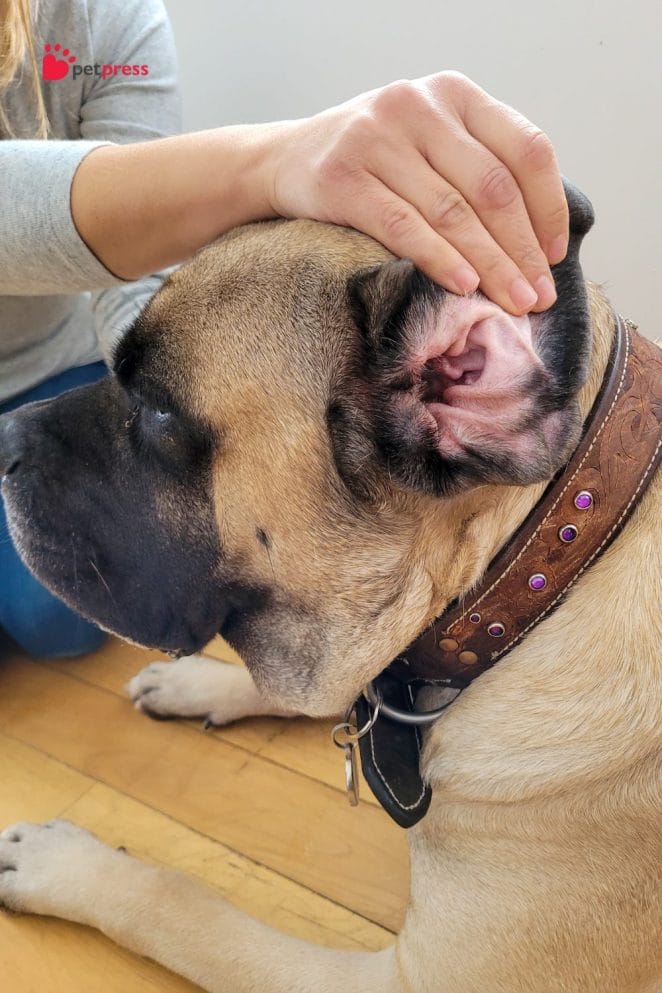
IV. Treatment Options for Common Ear Infections in Dogs
When it comes to treating common ear infections in dogs, there are several approaches, ranging from conventional medical treatments to home remedies. Understanding these options can help you make informed decisions about your furry friend’s health.
A. Conventional Treatments
For many ear infections in dogs, a trip to the vet results in a prescription for antibiotics, antifungal treatments, or specialized ear drops. These treatments are directly targeted at the underlying cause of the infection, whether it’s bacteria, yeast, or fungi.
- Antibiotics are usually prescribed when the infection is bacterial. They can be administered orally or as ear drops.
- Antifungal treatments come into play if the infection is caused by yeast. These can also be in the form of oral medication or drops.
- Ear drops often contain a mix of ingredients to tackle inflammation, itchiness, and the infection itself. They may also include steroids to reduce swelling.
Your vet will likely demonstrate how to properly administer these treatments, as correct usage is key to clearing up the infection.
B. Home Remedies and Care
While conventional treatments are necessary for severe infections, mild issues can sometimes be managed with careful at-home care.
- Regular Ear Cleaning: Using a vet-recommended ear cleaner, gently clean your dog’s ears to remove debris and excess wax. This should be done regularly, but frequency depends on your dog’s breed, activities, and ear health.
- Diet Adjustments: For dogs prone to allergies which can lead to ear infections, dietary changes might help. Omega-3 supplements, for instance, can reduce inflammation and potentially decrease the occurrence of ear infections.
- A Dry Environment: Keeping your dog’s ears dry, especially after baths or swimming, can prevent bacteria and yeast from proliferating.
Always consult your vet before trying home remedies, especially if your dog is already showing signs of an ear infection.
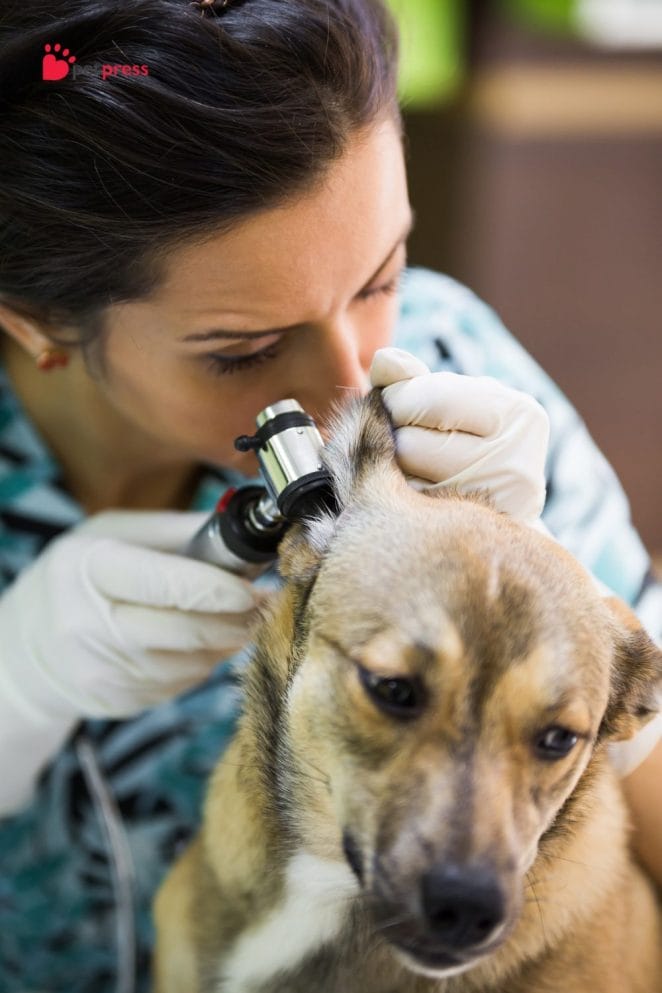
V. Living with Chronic Ear Infections
Some dogs, particularly those with floppy ears or allergies, may suffer from chronic ear infections. Managing these recurring issues requires a blend of veterinary care and lifestyle adjustments.
A. Managing Recurrent Issues
If your dog frequently battles ear infections, work closely with your veterinarian to identify potential triggers, whether they’re environmental allergens or food sensitivities. They may suggest:
- Regular check-ups to catch and treat infections early.
- Maintenance medication or ear drops to prevent flare-ups.
- Allergy testing and treatment, if allergies are the suspected cause.
B. Lifestyle Adjustments
Making some changes to your dog’s daily routine can help manage chronic ear infections:
- Grooming: Keep the hair around the ears trimmed to ensure better air flow, which helps keep the ears dry and less hospitable to bacteria and yeast.
- Diet: A high-quality diet with limited ingredients may help reduce allergic reactions that cause ear inflammation.
- Routine Cleaning: Establish a routine of regular ear cleaning with a solution recommended by your vet. This will help keep infections at bay.
Chronic ear infections in dogs can be challenging, but with the right approach, they can be managed successfully, leading to a happier and healthier life for your pet.
Conclusion
Navigating the world of common ear infections in dogs can initially seem daunting. However, armed with the right knowledge and tools, you can become a champion for your dog’s ear health.
Remember, understanding the symptoms and causes, along with a swift response to treatment, can make a world of difference. And prevention? That’s the golden key. Regular check-ups, coupled with a vigilant eye on your dog’s ear health, can keep those troublesome infections at bay.
FAQs: Common Ear Infections in Dogs
Ear infections in dogs are primarily caused by bacteria and yeast, though mites, excess moisture, and wax buildup can also contribute. Factors like allergies, ear shape, and lifestyle play significant roles, too.
Dogs with floppy ears like Basset Hounds or Cocker Spaniels, or those with hair in their inner ear canal like Poodles, are more susceptible to ear infections due to limited air circulation, which creates a cozy spot for bacteria and yeast.
It depends on your dog’s breed, lifestyle, and ear health. Generally, a monthly check-up and cleanup is a good start, but dogs prone to infections might need more frequent care. Your vet can offer personalized advice.
While some home remedies can provide relief, it’s crucial to consult with your vet first. Incorrect treatment can worsen the infection. For minor issues, your vet might recommend safe home care strategies in conjunction with medical treatment.
The dog might show signs like scratching their ears more than usual, redness inside the ear, a foul odor, head shaking, or even discharge. If your dog seems uncomfortable or is exhibiting these behaviors, it’s vet time!
Discover More Pawsome Tips: Check Out Our Other Tail-Wagging Articles!
Dog Health 101 – How To Tell Safe From Harmful Things
10 Common Dog Health Problems: Symptoms and Treatments
Beyond the Mix: Common Health Issues in Hybrid Dog Breeds


GIPHY App Key not set. Please check settings